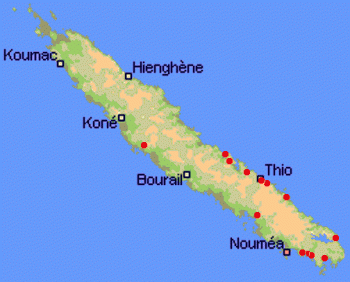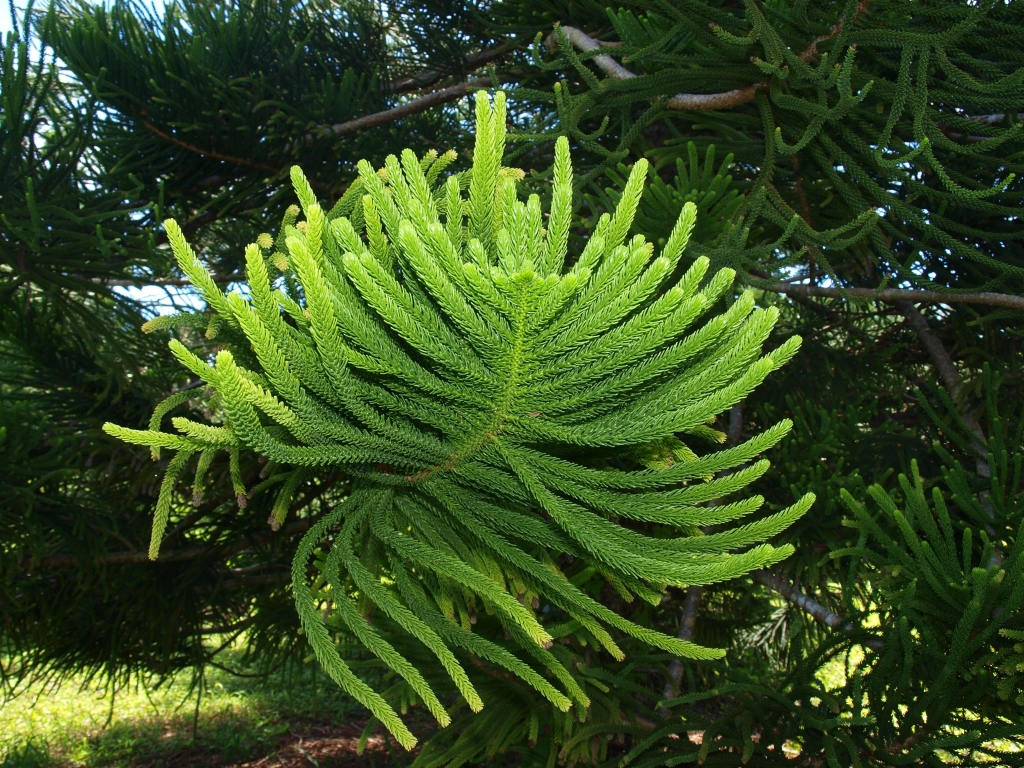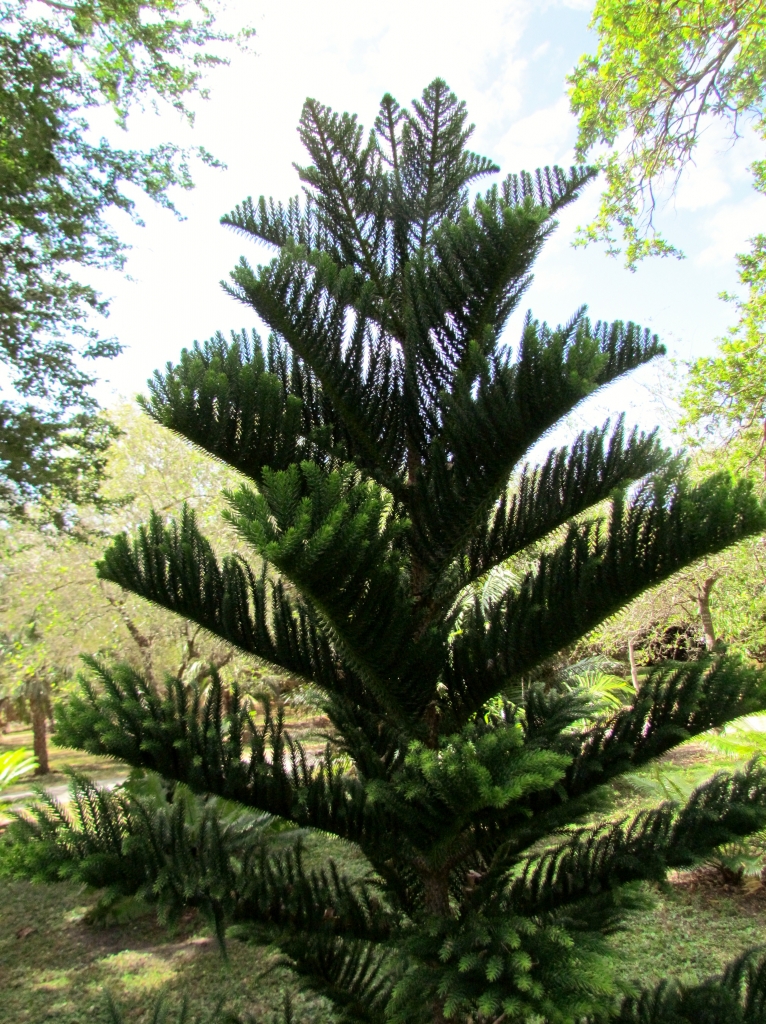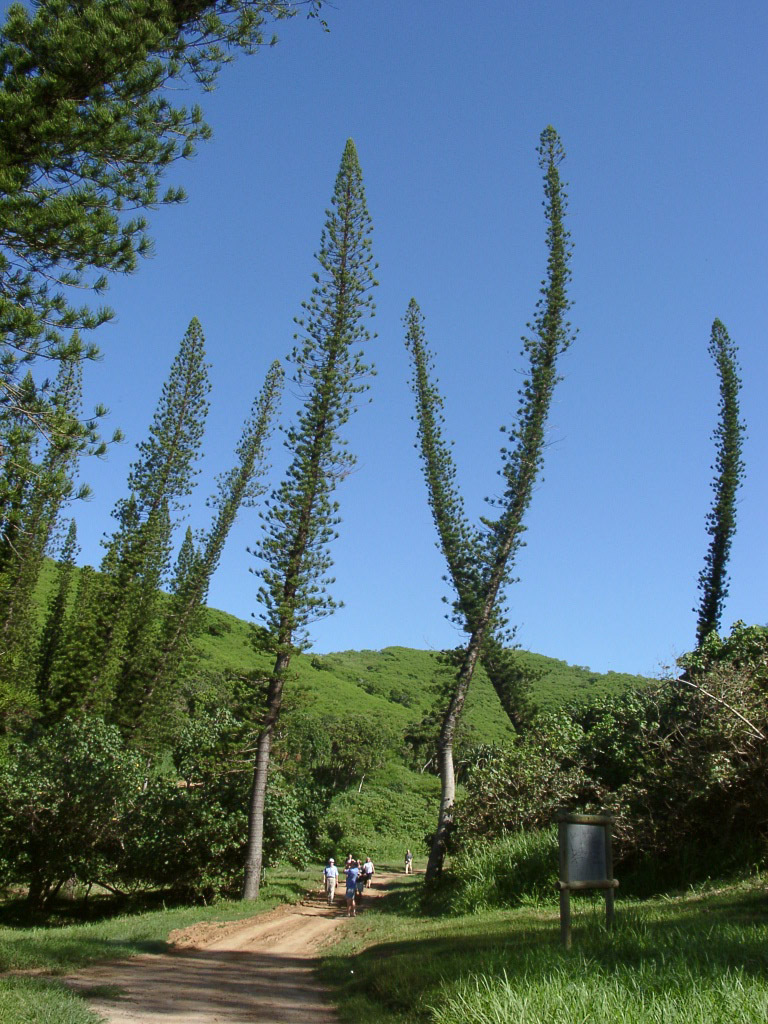Araucaria luxurians was first described in a work by Adolphe-Théodore Brongniart (1801-1876) and Jean Antoine Arthur Gris (1829-1872) with a completed description by David de Laubenfels in 1972. It is commonly known as Coast Araucaria.
Description. Coast araucaria is a columnar, evergreen coniferous species of tree which will grow to mature height of 100 feet (30 m) tall, with a dense rounded crown. Its bark is gray and exfoliates in thin strips. Twigs are multi-stemmed at the ends forming a fan-shaped branchlet, 0.4 to 0.7 inch (10 - 18 mm) in diameter. Juvenile leaves are scale-like, ovate, non-flattened and spreading, 0.24 to 0.48 inch (6 - 12 mm) long. Adult leaves are imbricate, ovate and scale-like, 0.2 to 0.28 inch (5 - 7 mm) long by 0.16 to 0.2 inch (4 - 5 mm) wide, with a prominent midrib. Pollen cones are cylindrical, 5 to 7 inches (12 - 17 cm) long by 1 to 1.1 inches (25 - 28 mm) wide with triangular, acuminate scales and oval microsporophylls with 12 to 15 pollen sacs . Seed cones are 4 to 5 inches (10 - 12 cm) long by 3.2 to 4 inches (8 - 10 cm) wide with short, stout bracts, to 0.4 inch (10 mm) long. Seeds are 1.2 to 1.4 inches (3 - 3.5 cm) long, with an elongated nut and with triangular wings.

Distribution. This species is native to New Caledonia - along the coast, near Canala, growing at elevations of 650 to 4,500 feet (200 - 1,400 m) over sea level.
The International Union for the Conservation of Nature (IUCN) reports that this species is facing a very high risk of extinction in the wild due to a limited and severely fragmented distribution that is experiencing ongoing declines in extent of habitat, number of subpopulations, and number of mature individuals. The surviving plants number no more than 2,500 mature individuals, with no more than 250 in any subpopulation.


